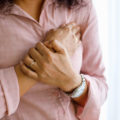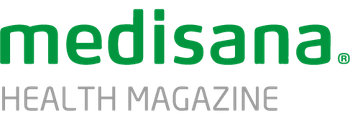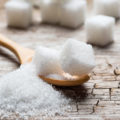The heart attack

The most common cause of death is a disease of the circulatory system. With around 338,000 deaths in 2020, cardiovascular diseases, primarily ischemic heart disease and heart attacks, accounted for more than one third of the 985,500 deaths in Germany.
Cardiovascular diseases were also the leading cause of death in Europe. As early as 2013, around 644,000 people died from them in the European Union (EU). At the same time, France and Spain have low rates of fatal cardiovascular disease. The reasons for this could be a healthier lifestyle. Latvia, on the other hand, ranks first in Europe with a heart attack mortality rate of 461 per 100,000 inhabitants.
Coronary heart disease (CHD) is a chronic disease that ranks as the number one killer in Western industrialised countries, according to the WHO. Narrowed coronary arteries lead to circulatory disorders, which in the worst case can lead to a heart attack. A heart attack occurs when a coronary artery becomes blocked with a blood clot. As a result of the occlusion, part of the heart muscle is no longer supplied with oxygen.
40 percent of those affected die within the first day, almost half of them from sudden cardiac death. In the long term, myocardial weakness can develop as a result of scarring of the tissue, especially in the case of large myocardial infarctions.
That is reason enough to take a closer look. Even if the heart is in distress suddenly and completely unexpectedly during a heart attack, warning signals can often appear about four weeks beforehand, as scientists have discovered. Unfortunately, this is often ignored.
What are the first signs of a heart attack?
The typical signs of a heart attack are: a strong feeling of tightness or pressure in the chest, stabbing, burning or pressing pain behind the sternum. Pain radiating to the left or right arm, back, neck or upper abdomen.
The people affected can be very restless (fear of death). The face is pale grey.
If blood flow is not restored within a few hours, some of the heart muscle tissue dies. Suddenly a person collapses, loses consciousness, his or her heart stops – sudden cardiac death occurs. It is estimated that around half of deaths caused by cardiovascular diseases can be attributed to sudden cardiac death.
To confirm the diagnosis of heart attack (myocardial infarction), doctors prescribe an electrocardiogram and analyse the electrical heart currents. “However, the main criterion to substantiate the diagnosis of a heart attack is the so-called troponin test”.
Detection with troponin parameter
Troponin is the most important parameter for detecting a heart attack. Compared to other parameters, the troponin value increases earlier, i.e. 3 hours after vascular occlusion, and remains measurable in the blood for several days. The higher the troponin value, the higher the probability of a heart attack.
Troponin is a protein that enters the bloodstream when the heart muscle is damaged and is consequently detectable in the blood.
Is the predisposition to a heart attack hereditary?
Genetic predisposition is one of the risk factors that cannot be influenced. In pre-disposed families, the risk of coronary heart disease and myocardial infarction is largely inherited. Here, controlling the risk factors is particularly important and effective, writes the Heart Foundation.
In a more recent study, most heart attacks were recorded in men between the ages of 68 and 76. In women, heart attacks occurred primarily between the ages of 76 and 84. But even young people can have a heart attack. Basically, the risk increases with age. However, it is possible to have a heart attack as young as 20 years old.
One reason may be the early development of arteriosclerosis. Ateriosclerosis is a vascular disease in which the arteries narrow due to deposits. This can reduce blood flow or, in the worst case, stop it altogether. In fact, in rare cases, it can occur between the ages of 20 and 30.
With around 300,000 heart attacks per year, the chance of survival is statistically around 85 percent. But about a quarter of heart attack patients who receive interventional treatment are no longer alive after five years.
In addition to the age of the patient and the severity of the infarction, long-term mortality also depends on the body mass index.
The insidious, silent heart attack
In the case of a silent infarction, the mortality rate is even higher because it is rarely recognised. With silent heart attacks, sufferers do not feel any clear symptoms, and this is what makes it so dangerous, as it is left untreated. In principle, silent infarction proceeds identically to symptomatic infarction – except that the usual complaints such as chest pain, tightness, shortness of breath, nausea and cold sweat are absent. As a result of circulatory disorders, parts of the heart muscle die. The risk of secondary diseases increases.
Rapid action is important
If a relative, colleague or someone who happens to be present shows signs of a heart attack, the following applies: Act quickly and calmly, but without losing time. Call the ambulance immediately (Tel. 112 or local emergency number) and also state your name. The probability of surviving a heart attack is greatest with immediate clinical treatment. Those who remain completely without medical help only have a chance of survival of around 40 percent.
Pay attention to the diet
If you get enough exercise, avoid stress, eat a balanced diet and keep an eye on your blood pressure, you are already doing a lot right. Cardiological screening is also useful to detect diseases such as cardiac insufficiency, high blood pressure or vasoconstriction at an early stage.
“Green tea can somewhat reduce the risk of heart attack, stroke and high blood pressure,” explains Prof. Hans Hauner. This can also be explained by the fact that green tea can positively influence the fat metabolism (lipid metabolism) as well as the sugar metabolism (glucose metabolism). The banana is a miracle cure in many ways, including for the heart. A banana (110 grams) contains 432 milligrams of potassium. Potassium lowers blood pressure, stabilises blood circulation and can thereby reduce the risk of cardiovascular diseases.
A group of Australian scientists recently found that regular yoghurt consumption has heart-protective effects. Oatmeal also contains a lot of soluble fibre from whole grain oats, which reduces the amount of cholesterol absorbed by the body. This has been shown to help lower cholesterol and reduce the risk of heart disease.
Those who enjoy half a handful of nuts several times a week are very likely to reduce their risk of cardiovascular disease. This is because nuts provide beneficial fatty acids and contain heart-protective ingredients such as vitamin E, folic acid, dietary fibre and secondary plant compounds. Strawberries, raspberries, blackberries and blueberries are also good for the heart. According to studies, regular consumption of avocado has a positive effect on HDL cholesterol levels. The high content of unsaturated fatty acids is responsible for this.
Apples are good for the heart. The results of the study from the University of California were published in the winter issue of the Journal of Medicinal Food. The study shows that apples work just like red wine and tea: As antioxidants, they promote the breakdown of bad cholesterol (LDL), which leads to hardening of the arteries.
Zest for life is essential
Dietrich Andresen, Chairman of the German Heart Foundation and cardiologist in Berlin, makes an amazing statement that surprised us. To the question from “Welt”: What is your favourite piece of advice, he replies: “People should enjoy life a little more! There are studies that show that a manager is not the typical heart attack patient. Rather, it is more those who are dissatisfied with themselves. They are the vulnerable group. A lack of zest for life makes you ill – and encourages a heart attack. I therefore advise every patient: Keep your zest for life”.
That’s a nice way to conclude. Stay healthy and keep your zest for life.
Sources:
herzstiftung.de
Herz – Planet Wissen
Herzinfarkt – dzhk.de › herz-kreislauf-erkrankungen › herzinfarkt
Herzbewusst.www.herzbewusst.de › herzinfarkt
Netdoktor.de




